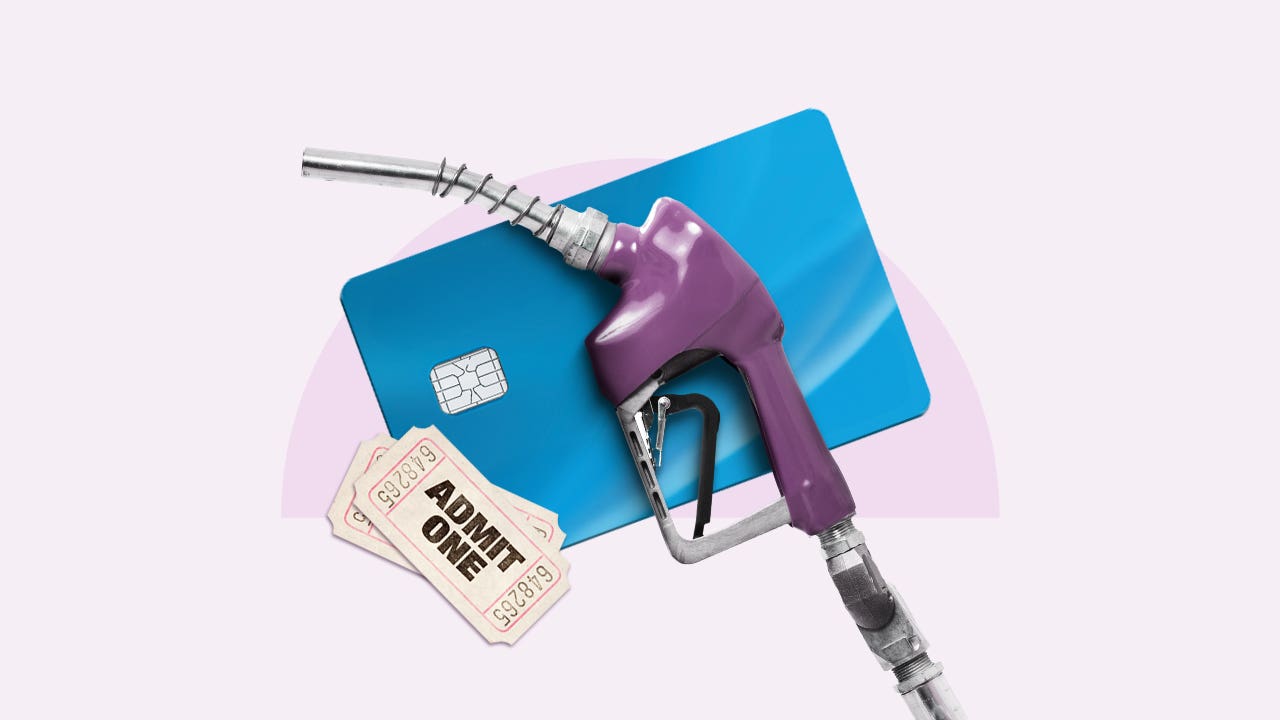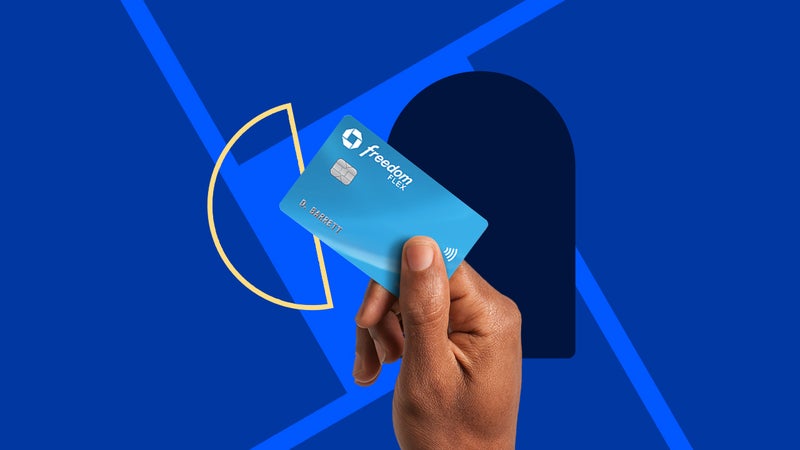Chase Freedom Flex Q3 2024 categories: How I plan to use my card

The Bankrate promise
At Bankrate we strive to help you make smarter financial decisions. While we adhere to strict , this post may contain references to products from our partners. Here's an explanation for . The content on this page is accurate as of the posting date; however, some of the offers mentioned may have expired. Terms apply to the offers listed on this page. Any opinions, analyses, reviews or recommendations expressed in this article are those of the author’s alone, and have not been reviewed, approved or otherwise endorsed by any card issuer.
At first glance, I’m not a huge fan of the Chase Freedom Flex℠* card’s third-quarter bonus categories: select live entertainment, movie theaters, gas stations and electric vehicle charging stations.
The promotion gives:
- 5 percent cash back on up to $1,500 in quarterly spending (July 1 through Sept. 30, 2024) in the eligible categories (activation required)
- 1 percent cash back for all purchases beyond that limit
Chase is keeping the Q3 2023 bonus categories and adding movie theaters. Two years ago, rental cars were included alongside gas stations, movie theaters and select live entertainment. Removing rental cars has been a bad trade for my family, since rental cars are pricey and we’re going to rent three cars this summer.
Normally, this is one of my favorite cash back credit cards because of the rotating 5 percent bonus categories and everyday benefits, such as 3 percent cash back on dining. I loved the Q1 and Q2 2024 categories, but Q3 isn’t as well-suited for my spending habits.
What qualifies as a live entertainment purchase?
On the plus side, I like how broadly Chase defines live entertainment:
“Merchants in this category sell tickets for live in-person entertainment such as major sporting events, zoos and aquariums, concerts, theatrical productions, museums, tourist attractions and exhibits, amusement parks, circuses, carnivals, bands, and entertainers. Ticket agencies selling on behalf of the entertainment venue are included.
“Some merchants that sell tickets for in-person entertainment are not included in this category; for example, movie theaters, bowling alleys, horse racing tracks, casinos, and dance hall/clubs. Purchasing from a hotel/concierge is not included nor excursions or purchases as part of a travel package.”
How my spending lines up
My family doesn’t spend a lot on gas (we average about $180 per month), and we don’t have an electric vehicle. We’re not big moviegoers, either. If we go once a quarter, that’s a big quarter for us. For my household, the usefulness of this promotion is going to come down to live entertainment.
I’ll need to get the most out of Chase’s live entertainment category
We spend a decent amount on live entertainment, but in a lumpy fashion, and most of our summer plans are already paid for. Prepaying for some fourth-quarter tickets (or even looking ahead to 2025) is likely the best way for us to maximize this promotion.
Of course, one should never overspend just to earn credit card rewards. Doing so can lead to credit card debt, which means you’ll have to pay interest on your balance from month to month. And these rewards are only worth it when you’re able to pay in full to avoid interest. Otherwise, the Freedom Flex charges a variable annual percentage rate (APR) of between 20.49 percent and 29.24 percent, depending on creditworthiness.
I’m talking about money my family would spend anyway. Ironically, our tendency to plan well in advance is hurting us here. Sometimes it’s necessary to plan ahead so that you secure concert or sports tickets before they run out. For something like our November trip to Disney World, however, we could have held off on booking park tickets until July if we knew this promotion was coming. Maybe I should have assumed based upon last year’s categories, although there’s no guarantee they will match up from year to year.
My wife and I have two young kids, and we like going to zoos and aquariums as a family. We have an annual Bronx Zoo membership (which we recently renewed – another expense I might have delayed if I knew the Freedom Flex promotion was coming).
I’m a sports fan who attends a handful of games each year. Meanwhile, my wife and older daughter enjoy Broadway shows and other music and theater performances. We’ll have plenty of opportunities to use the Freedom Flex for these sorts of purchases in Q3, likely for events later this year and into next year, since our summer calendar is already pretty full.
In my opinion, this bonus category would be better suited for Q2 (the run-up to a summer of fun), rather than during the summer itself.
Maximizing this bonus category will require some creativity
Our August trip to Nashville will represent some opportunities to utilize the live entertainment bonus category. We enjoyed the Nashville Zoo during our last visit and are planning to go back. We already have some concert plans and may still add a smaller show or two while we’re there.
There’s a fall jack-o’-lantern festival that we like to attend which will probably qualify as live entertainment, and that’s typically something we book in Q3. We also hitched a ride on The Polar Express last winter; I suspect Chase would count that as live entertainment if we end up going again this year. If so, we should reserve our tickets before the end of September.
The bottom line
We’ll need to be strategic about what we book and when, but there should be some opportunities for my family to earn 5 percent with our Freedom Flex in Q3. However, it won’t be nearly as easy to maximize the bonus categories this quarter as it was earlier this year. I easily hit the maximum in Q1 (at grocery stores) and again in Q2 (mostly at restaurants and Amazon.com).
It’s hard for every quarter to be a home run, of course. And Q4 is usually a solid one with a holiday shopping focus. Three out of four isn’t bad, and maybe my family’s spending habits will line up better than I expect them to in Q3.
Have a question about credit cards? E-mail me at ted.rossman@bankrate.com and I’d be happy to help.
*Information about the Chase Freedom Flex℠ has been collected independently by Bankrate. The card details have not been reviewed or approved by the issuer.




